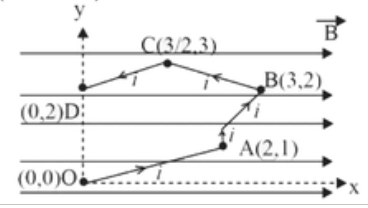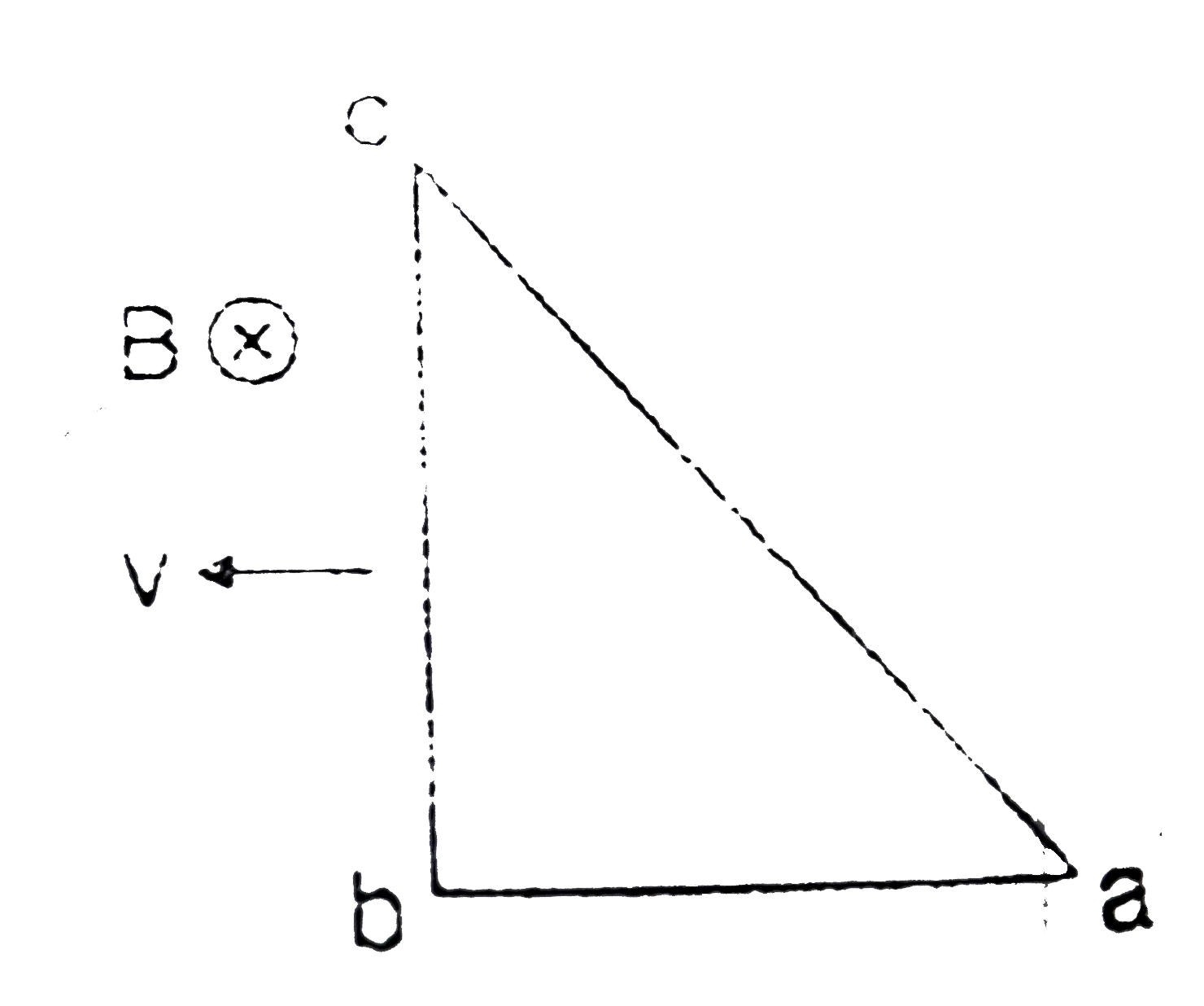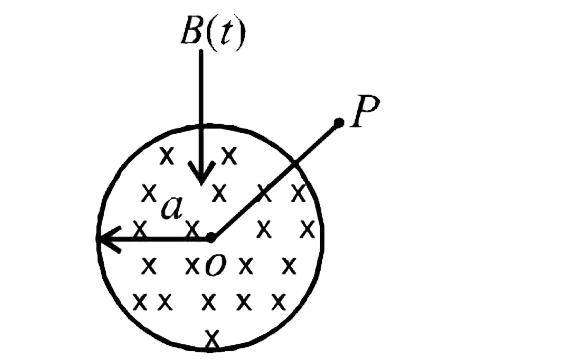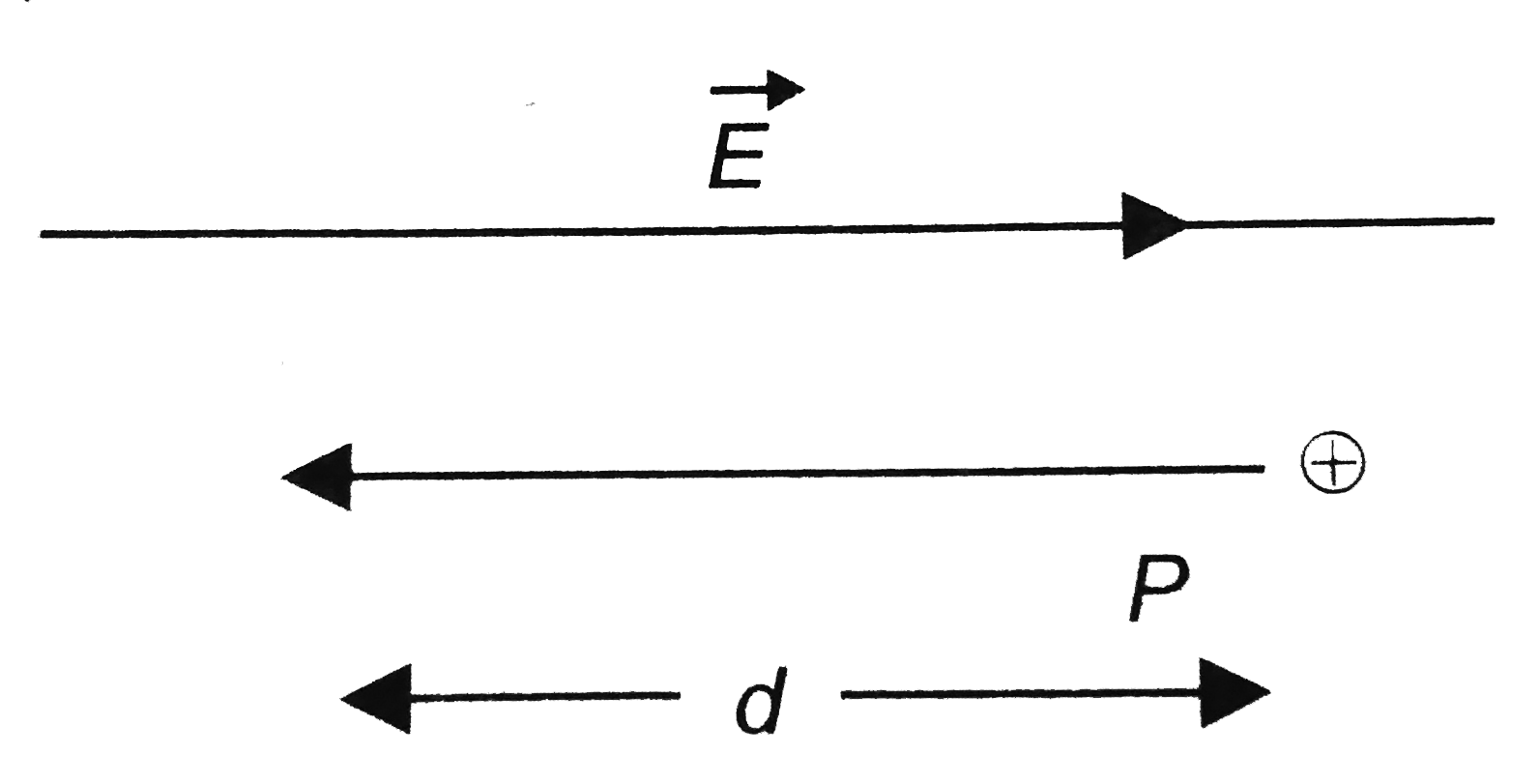A uniform magnetic field exists in the plane of paper pointing from left to right as shown in figure. In the field, an electron and a proton move as shown. The electron and the proton experience:

Forces both pointing into the plane of paper
Forces both pointing out the plane of paper
Forces pointing into the plane of paper and out of the plane of paper, respectively
Forece pointing opposite and along the direction of the uniform magnetic field respectively
The correct Answer is:A
In the given figure, the proton and electron are moving in opposite direction to each other and in perpendicular to the direction of magnetic field. Now, we know that, the direction of current is taken opposite to the direction of motion of electron.
So, both electron and proton has currect in same direction. Therefore the focees acting on it is given by Fleming's left hand rule and they are pointing into the plane of the paper.
Topper's Solved these Questions
- MAGNETIC EFFECTS OF ELECTRIC CURRENT BOOK - NCERT EXEMPLAR ENGLISHCHAPTER - MAGNETIC EFFECTS OF ELECTRIC CURRENT EXERCISE - SHORT ANSWER TYPE QUESTIONS
12 Videos
- MAGNETIC EFFECTS OF ELECTRIC CURRENT BOOK - NCERT EXEMPLAR ENGLISHCHAPTER - MAGNETIC EFFECTS OF ELECTRIC CURRENT EXERCISE - LONG ANSWER TYPE QUESTIONS
8 Videos
- LIGHT : REFLECTION AND REFRACTIONBOOK - NCERT EXEMPLAR ENGLISHCHAPTER - LIGHT : REFLECTION AND REFRACTIONEXERCISE - Long Answer Type Questions
9 Videos
- MANAGEMENT OF NATURAL RESOURCESBOOK - NCERT EXEMPLAR ENGLISHCHAPTER - MANAGEMENT OF NATURAL RESOURCESEXERCISE - Long Answer Type Questions
6 Videos
Similar Questions
A uniform magnetic field →B of magnitude 0.2 T exists in the plane of paper from left to right. A conducting wire, bent in an irregular manner, and carrying a current i , equal to 5A is placed in the plane of paper as shown in figure. Force acting on the wire (in Newton) is

View SolutionA right angled triangle abc made of a metallic wire, moves at a uniform speed v in its plane as shown in the figure.A uniform magnetic field B exists in the perpendicular direction of plane of triangle.Find the emf induced (a)in the loop abc. (b)in the segment bc,(c)in the segment ac and (d) in the segment ab.

View SolutionA constant current flows in a horizontal wire in the plane of the paper from east to west as shown in figure. The direction of magnetic field at a point will be North to South:

View SolutionFind the magnetic field at point O shown in the figure

View SolutionA uniform but time-varying magnetic field B(t) exists in a circular region of radius a and is directed into the plane of the paper, as shown. The magnitude of the induced electric field at point P at a distance r from the centre of the circular region

View SolutionIf an electron and a proton having same momenta enter perpendicular to a magnetic field, then
View SolutionA uniform magnetic field exists in a circular region of radius r.The magnitude of magnetic field is B and points inward.An electron flies into the region radially as shown in figure.After a certain time, the electron deflected by the magnetic field leaves the region.The time interval during which the electron moves in the region is Nmtan−1eBrmVeB.Then find value of N.(m is mass of electron and e is charge of electron)

View SolutionIn the figure, a proton moves a distance d in a unform electric →E as shown in the figure. Does the electric field do a positive or negative work on the proton? Does the electric potential energy of the proton increase or decrease?

View SolutionA rod AB moves with a uniform velocity v in a uniform magnetic field as shown in figure

View SolutionA uniform but time varying magnetic field exists in a cylindrical region as shown in the figure. The direction of magnetic field is into the plane of the paper and its magnitude is decreasing at a constant rate of 2×10−3T/s. A particle of charge 1μC is moved slowly along circle of radius 1m by an external force as shown in figure. The plane of the circle of radius 1m by an external force as shown in figure. The plane of he circle lies in the plane of the paper and it is concentric with the cylindrical region. The work done by the external force in moving this charge along the circle will be

View Solution